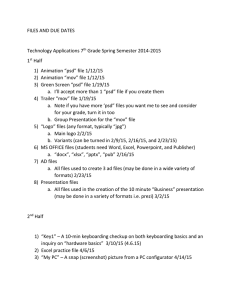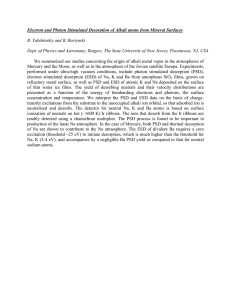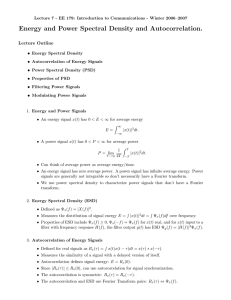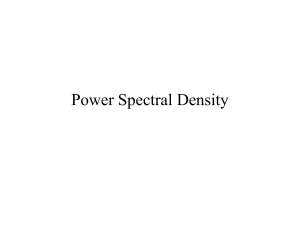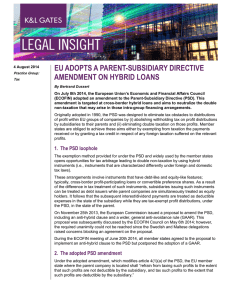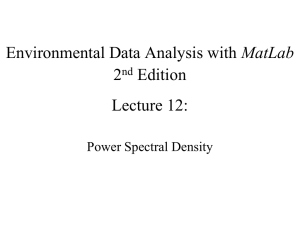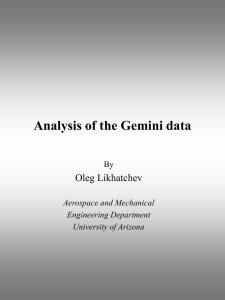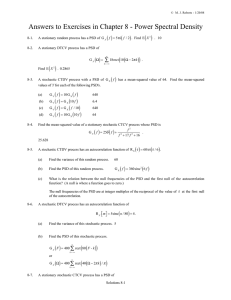Physics Seminar
advertisement
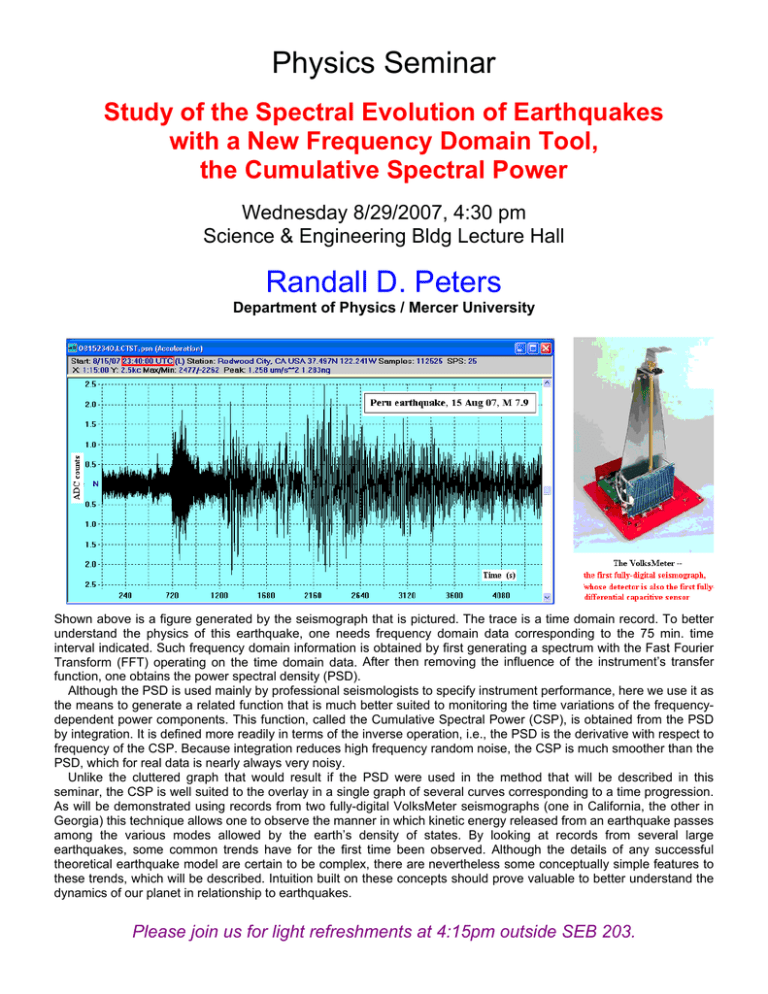
Physics Seminar Study of the Spectral Evolution of Earthquakes with a New Frequency Domain Tool, the Cumulative Spectral Power Wednesday 8/29/2007, 4:30 pm Science & Engineering Bldg Lecture Hall Randall D. Peters Department of Physics / Mercer University Shown above is a figure generated by the seismograph that is pictured. The trace is a time domain record. To better understand the physics of this earthquake, one needs frequency domain data corresponding to the 75 min. time interval indicated. Such frequency domain information is obtained by first generating a spectrum with the Fast Fourier Transform (FFT) operating on the time domain data. After then removing the influence of the instrument’s transfer function, one obtains the power spectral density (PSD). Although the PSD is used mainly by professional seismologists to specify instrument performance, here we use it as the means to generate a related function that is much better suited to monitoring the time variations of the frequencydependent power components. This function, called the Cumulative Spectral Power (CSP), is obtained from the PSD by integration. It is defined more readily in terms of the inverse operation, i.e., the PSD is the derivative with respect to frequency of the CSP. Because integration reduces high frequency random noise, the CSP is much smoother than the PSD, which for real data is nearly always very noisy. Unlike the cluttered graph that would result if the PSD were used in the method that will be described in this seminar, the CSP is well suited to the overlay in a single graph of several curves corresponding to a time progression. As will be demonstrated using records from two fully-digital VolksMeter seismographs (one in California, the other in Georgia) this technique allows one to observe the manner in which kinetic energy released from an earthquake passes among the various modes allowed by the earth’s density of states. By looking at records from several large earthquakes, some common trends have for the first time been observed. Although the details of any successful theoretical earthquake model are certain to be complex, there are nevertheless some conceptually simple features to these trends, which will be described. Intuition built on these concepts should prove valuable to better understand the dynamics of our planet in relationship to earthquakes. Please join us for light refreshments at 4:15pm outside SEB 203.


